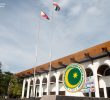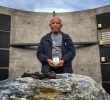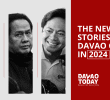By CHERYLL D. FIEL | Davao Today
For a country in the tropics surrounded by a belt of the world’s most active volcanoes and regularly visited by typhoons, the need for stories that deal with disasters – how to avoid them and manage the risks – becomes more compelling.
Unfortunately, in a country so prone to disasters and yet so lacking in mechanisms to prevent its adverse effects, there is a dearth of such stories.
Redmond Batario, Center for Community Journalism and Development (CCJD) executive director, pointed out the practice by the media of reporting disasters as “isolated events.”
Batario observed that oftentimes, news stories on disasters tend to delve more on the emergency rather than on the actions of communities, individuals and groups in preparing, if not preventing, disasters and avoiding destruction of lives and properties.
He pointed out that often, the media miss out on what it ought to do in reporting disaster incidents: that is, to help people make sense of what is happening around them and connecting these issues to their daily lives so that they are able to make informed decisions.
This is why members of the media and non-government organizations (NGOs) involved in Disaster Risk Reduction (DRR) works recently came together for a training, dubbed as “Enhancing News Media Capacity on DRR reporting and Multi-sectoral Engagement” to discuss how to cover disasters better.
The media may be found guilty of these lapses, but part of the blame also goes to how the news sources deliver the information to them, according to Philippine Daily Inquirer Visayas correspondent Diosa Labiste.
Labiste, a resource speaker during the training, cited that the availability of experts to explain issues and scenarios was a problem noted by journalists in the Guimaras oil spill coverage. She noted, though, that journalists might have also failed to seek out those experts.
The Guimaras oil spill was considered one of the world�s worst environment disasters in 2006, when a foreign tanker sank nine miles off the coast of Guimaras, spilling barrels of oil into the sea.
Labiste who used the Guimaras Oil Spill experience in facilitating discussion on issues on media coverage of disasters stressed that “scientists can do a lot in helping the public make sense of the issue by speaking more to reporters.”
“When they speak to reporters, they speak to the public,” Labiste said. She stressed the need for scientists to make themselves accessible to reporters since they are the persons that reporters are more likely to seek out for explanations.
Labiste said this also applies to NGOs who are often the first to respond to disasters that journalists cover.
But participants from the NGOs also confronted the media with questions. “Why are the stories, especially those about Disaster Risk Reduction efforts, not landing in the news?” they asked.
A simulated press conference was held where participants from the media explained their observations and gave tips as to how NGOs could best craft their message so that the media can easily capture them in their stories.
The NGO participants also shared their experiences in responding to disasters, which proved very enlightening and informative, especially for the media who often find themselves at a loss where to go to, whom to ask, whenever a disaster strikes.
Information on who declares that it is already a disaster, what happens to calamity funds and upon whose authority the issuance of warnings rests, proved valuable.
In the end, the participants committed to do what they can in their respective fields to help communities address issues on disaster and to improve awareness and preparedness of the public. (Cheryll D. Fiel, davaotoday.com)










